How to Make Money Blogging in 2018 (Starting from Nothing)
By Jon Morrow

In this post, I’ll walk you step-by-step through how to make money blogging.
And it’s not just theory. I’ve built three different sites to over $1 million per year, including this one.
Here’s a screenshot of just one month of revenue for Smart Blogger:
Granted, it was a good month. We don’t always make that much money money blogging.
But we almost always cross $100,000.
How?
Well, I’ll tell you. Not because I want to brag (well, maybe a little), but because most of the advice out there is complete crap.
For instance, do you see any ads on this site?
No? How about e-books for sale?
None of those either, huh?
There’s a reason why.
Table of Contents
- How Do Bloggers Make Money?
- How to Make Money Blogging
- Step #1: Set up Your Blog
- Step #2: Write Content That Gets Lots of Traffic
- Step #3: Convert Visitors into Email Subscribers
- Step #4: Send Those Subscribers Content That Builds Trust
- Step #5: Sell Products or Services Your Audience Wants
- Don’t Sell Advertising (or Use Google AdSense)
- Start with Affiliate Marketing (or Services)
- Build the Funnel in Reverse
- There’s No Such Thing As a “Cheap” Market
- The Price Depends on the Promise
- Webinars Kick Butt
- Automated Funnels Are Even Better
- Your Email List Is More Important Than Anything Else
- Start Selling from Day One
- Share What You Learned
How Do Bloggers Make Money?
The moment you decide to use your blog to make money, you’re no longer just a blogger. At that moment, you also become an entrepreneur, and your blog becomes a small business.
You’ve probably heard of financial planners giving free seminars to attract clients, right?
Well, blogging is a lot like those free seminars. You’re giving away your expertise and knowledge in the hopes of attracting customers and then gaining their trust.
In other words, if your goal is to make money with your blog, use it as a lead generation mechanism. Nurture those leads until they are ready to purchase, and the profit can quickly snowball.
How to Make Money Blogging
Anyone who wants to make money from their blog needs to follow a few required steps. I’ll explain each of these steps below, but first, let’s give you a quick overview.
This is how you make money from a blog:
- Set up your blog
- Write content that gets lots of traffic
- Convert visitors into email subscribers
- Send those subscribers content that builds trust
- Sell products or services your audience wants
The problem?
It’s hard to do. The process is simple on the surface, but each step is enormously complicated and requires extraordinary skill. Below, we’ll explore these steps a bit further.
Here’s how to make money blogging:
Step #1: Set up Your Blog
The first step is to set up your blog, but where do you start?
- You have to pick a topic for your blog. What’s it about? Marketing? Health? Gardening? Many are tempted to start a blog that combines several of their interests, but I recommend keeping blog as focused as possible. (It would make no sense to talk about gardening and marketing on the same blog, after all.)
- When you’ve picked a topic, you need to get a domain name. You should brainstorm a few good options and then run them through a domain checker to see if they are still available. (Tip: Pick one that doesn’t obfuscate your blog topic. You domain name must give some sense to what your blog is about)
- Once you’ve picked and purchased your domain name, you need to get web hosting. You’ll find many companies offer cheap hosting that’s perfect for bloggers just starting out. We recommend SiteGround (affiliate link).
- Next, it’s time to install WordPress, which is the best blogging platform you can use. Fortunately, most hosts offer an easy install option from within your account.
- Lastly, you want to upload a good-looking theme so your blog looks professional. You’ll find free themes available online that you can download and install, or you can pay for a premium theme.
When you’re all done, you’ll be ready to publish content and start drawing traffic.
Step #2: Write Content That Gets Lots of Traffic
If you want to make money blogging, you need to publish content that draws lots of traffic.
But how?
Well, your content will draw the bulk of traffic through two main channels:
- Search
- Social
Search traffic will find your content through search engines, while social traffic will find your content through social media. If your content fails in both these arenas, it will only draw pitiful traffic — certainly not enough to produce a decent income.
That means you need to…
- Research which keywords your audience is typing into search engines. You can do this by using keyword tools like SemRush, Ahrefs, and the Google Keyword Tool. (Ideally, you want to choose keywords that have lots of search volume, but low competition.)
- Research what kind of content they typically share on social media. You can do this by running blogs on the same topic as yours through Buzzsumo. (Though, just to be clear, you shouldn’t just copy their ideas. Use them for inspiration to create something of your own.)
When you have your topics, the next step is to write a useful post that helps your audience reach a certain goal. And take note: Your have to write a stellar post. Your post should outshine all its competitors.
Because once your post is written, you need to promote it to drive initial traffic. And if that initial traffic isn’t impressed, the post won’t take off, and you’ve done it all for nothing.
Step #3: Convert Visitors into Email Subscribers
Once your blog is getting visitors, you need to focus on building your email list.
Because you don’t just want visitors, you want recurring visitors. You want visitors who come back to read and share every post you write.
But they won’t, unless you remind them. And you can’t, unless you get their email address.
That’s why you must convince them to subscribe. Then, you can send them an email whenever you publish a new blog post.
Here’s what you need:
- An email marketing platform: This allows you to send mass-emails to everyone who subscribes to your list. (We recommend Mailchimp for beginners.)
- Sign-up forms on your blog: Visitors need somewhere to enter their email address. You can offer sign-up forms in your sidebar, at the bottom of your posts, and/or in a popup.
- A bribe to subscribe: You need to give visitors a compelling reason to subscribe, because they won’t easily part with their email address. You can incentivize them by offering something valuable for free.
With those three items in place, you’ll be ready to collect emails.
Recommended reading:
Step #4: Send Those Subscribers Content That Builds Trust
People won’t buy from you unless they trust you. So before you bombard them with links to your sales pages, you need to take some time to build that trust.
You build trust by sending them content that gives them tremendous value — for free.
This content should help them reach a certain milestone or give them an “Aha!” moment that brings them closer to their goals.
When they see for themselves that your advice works, they’ll not only trust you more, they’ll also be curious to discover what valuable insights your paid offers might give them.
When they see that your free content gets them results, they’ll know that you’re the real deal and not some phony scam artist. And when they see how valuable your free content is, they’ll be curious to see what they could gain from purchasing your products or services.
Recommended reading:
Step #5: Sell Products or Services Your Audience Wants
Now that you’ve built an audience and you’ve gained their trust, you’re all set to start selling products and/or services.
Just make sure you offer them something they truly want. That might seem obvious, but you’d be surprised how many people spend weeks or months creating a product that hardly sells. They’ll create the product that they want to create, because they think it’s what their audience needs, only to discover their audience isn’t interested.
Don’t assume you know what they want. Research your audience or run a survey to discover the biggest problems they need solved right now. Then create a product or offer a service that solves it.
That’s how you make money off a blog.
Recommended reading:
Of course, what if you don’t have any products and services to sell? What should you do then?
Well, you can also make money blogging by selling someone else’s products and services.
The most conventional (and least profitable) method is selling advertising, where you allow companies to promote their products and services to your audience in exchange for a fee. You can also form partnerships with other companies, promoting their products and services and earning a commission each time one of your readers purchases. This is called “affiliate marketing.”
Which model should you choose? What should you do?
Well, I can give you my thoughts. After a decade in this business, I’ve learned a few things, and I believe some of them might surprise you…
Don’t Sell Advertising (or Use Google AdSense)
Ask your average beginner how they plan to make money blogging, and they’ll say they plan to sell ads on their site. After all, that’s how big newspapers and magazines monetize, so why not them?
But it’s a mistake.
When I was at Copyblogger, we ran a little experiment. Normally, we refused to sell any ads on the site, but just as a test, we decided to put three ad spots in the right sidebar. The site looked like this:
Initially, we placed ads for our own products in each of the three spots, and we tracked all the sales resulting from someone clicking on the ad. I don’t remember the precise numbers, but we had something like $50,000 in product sales over 30 days. Not too shabby.
Well, out of curiosity, I shopped around to see how much advertisers would pay for the same ad space. The absolute highest rates I could negotiate would’ve brought in only $5,000 per month per ad spot, totaling $15,000 per month — 70% less than we made selling our own products.
And this was for a big, authority site! Imagine the pitiful rates a beginning blogger would get trying to make money blogging that way.
Granted, it’s not really a fair comparison. With your own products, you have to consider the cost of development, support, and other miscellaneous expenses, but even factoring those in, advertising our products was still more profitable by far.
The next most profitable strategy would have been to partner with other companies, collecting a commission on each sale as an affiliate. We never tested it, but I would guess we would’ve made somewhere around $25,000 per month on the spots — 60% more than advertisers would have paid.
The point?
If you have an engaged audience that trusts you, and you’re trying to figure out how to make money blogging, selling ads is never a smart move. And that includes all the variations like Google AdSense, sponsorships, and advertising networks. None of it will make nearly as much money as promoting your own products or earning commissions from promoting someone else’s.
Let’s talk about that next…
Start with Affiliate Marketing (or Services)
As I write this, it just so happens that I’m in the initial stages of starting a new blog (more details to be announced soon). It’s in a completely different space where I have no products, so I’ve been pondering the best way to monetize it, and here’s what I think…
Affiliate marketing is the smartest strategy.
If you’re not familiar with the term, it’s a business model where you endorse other people’s products or services in exchange for a commission. On software and information products, affiliates typically earn a 50% commission or sometimes even more, so it can be quite lucrative.
Pat Flynn, for example, makes over $100,000 a month in affiliate commissions. Here at Smart Blogger, we mostly promote our own products, but we also make a tidy sum promoting LeadPages and SiteGround:
Granted, you won’t make that kind of money when your blog is small, but when you’re just starting to learn how to make money blogging, affiliate marketing is still a good way to start for several reasons:
- It’s faster. Instead of investing months or even years creating a product, all you have to do is publish a link on your site. Assuming your audience is engaged, you could be earning commissions within hours or even minutes.
- The income from affiliate marketing is almost entirely passive. You don’t have to worry about creating products, supporting customers, or any of the technical complexity of selling your own products or services. You can also invest the time you save into growing your traffic, leading to more revenue later.
- It can guide future product creation. If one affiliate product sells 10X better than all the others you promote, you might want to think about developing your own version of the product, because you have proof your audience wants it.
Personally, I think the advantages are so enormous that when it comes to how to make money blogging, no one should consider any other business model… with one exception:
Service providers.
If you are a graphic designer, real estate agent, attorney, or any other type of service provider, you probably want to offer your services on your blog from day one. The profit you make will almost certainly outstrip anything else, at least in the beginning.
Build the Funnel in Reverse
Even if you’re making fantastic money from affiliate marketing or selling services, chances are you’ll want to try your hand at developing your own product at some point. So, where should you start?
My answer: with blogs, the most profitable price is usually the end of the funnel. Here’s what I mean…
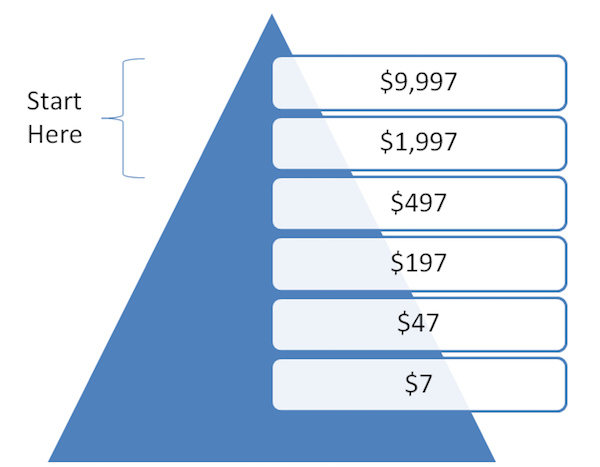
Build a sales funnel in reverse, starting with higher prices.
You’ve seen a sales funnel, right? A company entices you with a freebie, then they offer you something cheap but irresistible, and then they gradually sweet talk you into buying more and more expensive stuff. It’s a tried and true marketing tactic, and you should absolutely build a sales funnel for your blog.
What you might not know is you should build it in reverse.
A lot of bloggers launch a cheap e-book as their first product, and then they get frustrated when they don’t make much money. Here’s why: the real profit is at the end of the funnel, not the beginning.
Selling e-books is fine and dandy if you have half a dozen more expensive products to offer your customer afterwards, but it’s downright silly if you don’t. You’re much better off creating and selling the expensive product first, and then gradually building cheaper and cheaper products.
When you do have some less expensive products to sell, you can offer those to new people first, safe in the knowledge that you have something more profitable up your sleeve to sell them later.
Here at Smart Blogger, our products cost $9,997, $1,997, and $997, $497, $197, and $47. We started on the expensive side first, and we gradually worked our way down. It’s been much, much more profitable this way.
There’s No Such Thing As a “Cheap” Market
“But Jon,” I can hear you spluttering. “I can’t sell a $10,000 product! My customers don’t have that much money.”
My response: you’re 98% right. Unless you’re selling exclusively to multimillionaires, the vast majority of your customer base won’t be able to afford premium products, but what’s interesting is it doesn’t matter. Often, you can make more money selling to the 2% than you can to the entire 98% combined.
For instance, our $10,000 product is a year-long coaching program for bloggers — a group that’s not exactly known for their wealth, but I always fill all ten spots within minutes of opening the program. Here’s why: the last time we opened it, I notified 40,000 bloggers. 2% of 40,000 writers is 800 people. By only accepting 10, I’m creating a situation of extreme scarcity.
You can do the same thing, even if your list is much smaller. If you have 100 subscribers, chances are two of them might be willing to buy premium products or services from you, and those two will often pay you more money than the other 98 combined.
And let me be clear…
I’m not saying you have to charge $10,000. We actually make even more money from our $2000 product than we do the $10,000 one:
The point is, most people are afraid to charge more than $200 for a class, believing that’s all people can afford, but it’s just not true. Every market has customers who are and willing to pay for a premium experience. Give them one.
Just be aware… higher prices demand bigger promises. Let me explain.
The Price Depends on the Promise
Let’s go back to the example of the $10,000 coaching program. How on earth did I get people to pay me that much money?
It’s not because they were stupid. They didn’t get one of my emails and say, “Oh, look honey, this is a fabulous opportunity to throw our money away. Let’s give this good-looking fellow $10,000 just for the hell of it.”
On the contrary, they expected a lot of me. In exchange for that $10,000, I promised to help them launch their blog from scratch and get their first 10,000 email subscribers in only 12 months.
That’s one hell of a promise. Just to put a dollar value on it, you could probably sell a blog with 10,000 subscribers for at least $100,000 in most markets. So, I was essentially promising them $100,000 of value in exchange for only $10,000.
This, my friend, is one of the fundamentals of business.
If you want to charge high prices, you absolutely can, but you must make big promises. Similarly, if you want to charge low prices, you absolutely can, but you must make small promises. In either case though, the value of the promise should be at least 10X the price.
For instance, we have a guest blogging course that retails for $497. In exchange, we promise to help students get featured on a big blog or magazine like The Huffington Post or Forbes. I think it’s fair to say that exposure is worth $5,000 to the right person. So, the product sells easily and well.
Not to say everything is sunflowers and daffodils here, though. In fact, there are two easy ways to screw up:
- Charging high prices but making small promises (result: the product doesn’t sell well, and you waste a ton of time).
- Charging low prices but making big promises (result: lots of customers, but you make no profit).
There’s a rumor floating around that I’ve made each of those mistakes on multiple occasions. Some people also say I have to be repeatedly reminded about the graph above, lest I slip up and nearly bankrupt the company (again).
But come on, who are you going to believe? 😉
No, in all seriousness, I learned all of these lessons the hard way. If you’re wondering how to price your product or service, you’d be wise to heed my words.
Oh, and a few final points before we move on:
- Needless to say, you should only make promises you can actually fulfill. Anything less is unethical.
- If people immediately think you’re full of shit upon hearing your promise, then you’re in trouble. In my opinion, this is what marketing is really about: getting people to trust you when you say you can help them. The better you are at it, the more money you’ll make.
- In the above graph, “value” refers to how much the customer values what you’re promising them, not your own personal value. For instance, I personally think my guacamole is worth $10,000 a bowl, but none of my friends agree with me, so I’m forced to give it to them for free. Bastards.
Also, I’m skipping a lot of other important topics like price testing, competition, economics, and lots of other variables that affect how to make money blogging, but in my opinion, none of those things are even worth considering until you know the answer to this one simple question:
What can I offer people that’s worth 10X what I charge?
Answer that, and you’ll at least be headed in the right direction.
Webinars Kick Butt
If you’ve been on our email list for long, you know that we do a lot of webinars. Here’s why:
On average, each webinar generates about $60,000 in sales. It’s by far the most profitable thing I do. Nothing else even comes close.
If you’re wondering how on earth we make that much money, part of it is how many people attend. For instance, here’s a webinar where we had over 3,000 people registered to attend:
But that’s only part of it.
The other part is just the skill of doing a really good webinar. If you want to know how we do it, all you have to do is attend one of our webinars to find out. Everything we do is on display, and you can study it, free of charge.
Automated Funnels Are Even Better
You know what works even better than webinars for us?
Automated funnels. Take a look at this bad boy:
Now, before I get into the nitty-gritty details, a word of warning: this is extremely advanced marketing. I don’t even recommend you think about this until you cross $100,000 per year in revenue.
But here’s the idea:
Through the magic of technology, we have sales happening every minute of every day. We can automate who gets discounts at what times, as well as when those discounts expire.
We can also chain together promotions. If you don’t respond to a $2000 offer, we might follow up with a $497 offer, which now seems cheap by comparison.
Oh, and did I mention we are tracking your every move?
For instance, you’re reading a post about how to make money blogging. If you’re a subscriber, what do you think the odds are that you’ll receive an email from us sometime soon offering you a product about how to make money blogging?
Hmm. Pretty good, I think. 😉
And just to be clear, this is all automated. I’m not doing anything. No one is.
The computer is following rules we set up in advance, and it’s following them 24 hours a day, seven days a week, 365 days a year.
Welcome to the future of marketing.
Your Email List Is More Important Than Anything Else
Okay, enough flashy technology. Let’s get back to foundational principles.
In analytics, there is a principle called “the one metric that matters” (OMTM). The idea is that you find a single number that accurately predicts the success or failure of your project.
In the case of blogging, that number is the size of your email list. (Not RSS, mind you — it’s dying a slow but certain death.) In my experience, your email list is the most accurate predictor of how much money you’ll make.
Here at Smart Blogger, we strive for one dollar per subscriber per month in sales, and I think that’s a good place to start when you’re a beginner too. In other words, an email list of 1,000 subscribers should result in at least $1,000 per month in sales, 10,000 subscribers would result in $10,000 per month in sales, and so on.
The more subscribers you get, the more money you make. Granted, your relationship with your subscribers and the quality of your products or services and dozens of other factors still matter, but to drive revenue, focus on email list growth. To make money blogging, it’s absolutely essential.
Start Selling from Day One
How long should you wait before you begin selling? 1,000 subscribers? 10,000 subscribers? More?
Nope. Start selling from day one. Here’s why:
Motivation.
If you’re not making any money from your blog, it’s hard to stay motivated to continue. The opposite is also true. For instance, how do you think I feel when I see this number pop up on my dashboard every day?
It’s pretty easy to feel pumped with numbers like that. 🙂
And honestly, the numbers don’t have to be big.
I remember the first morning I woke to discover I’d made $100 overnight. It felt… magical. It also gave me the motivation to do the work necessary to make sure that happened every night.
It’ll be the same for you. When you have money being deposited into your account every day, it’s a whole lot easier to keep yourself motivated.
It will also give you the funds you need to build a team around you. You can hire an assistant, a tech person, a billing person. The faster you get rid of stuff you suck at doing, the faster you will grow.
Now, a caveat: don’t turn your blog into a gigantic sales pitch. Nobody likes that. You should, however, be offering something your audience wants and needs. Don’t push them on it, but do make it available, and do remind them from time to time that they can purchase it.
Share What You Learned
Now, we come to the reason for this post.
Why on earth would the CEO of the company (me) work hours to write a post like this, sharing all our secrets for how to make money blogging? It’s over 3,000 words, for God sakes!
Simple:
It’s my responsibility. If people are ever going to respect blogging as a legitimate business model, those of us who are successful have to speak up and share what we’ve learned. None of us works in a vacuum. The only way we can advance our field as a whole is to collectively share what we’ve learned.
After all, isn’t that what we’re here to do? Help people?
In the end, that’s what I love most about blogging: every article we publish, every course we create, every coaching call we do can change somebody’s life. Maybe not always in a big way, but we touch thousands upon thousands of people, and we make their lives just a little bit better. We inform them, we inspire them, and we give them the roadmap for achieving their dreams.
And the best part?
We get paid for it. It’s our job.
I just wish more people knew it was a viable career. Let’s change that, shall we?
About the Author: Jon Morrow has asked repeatedly to be called “His Royal Awesomeness,” but no one listens to him. So, he settles for CEO of Smart Blogger. Poor man. 😉

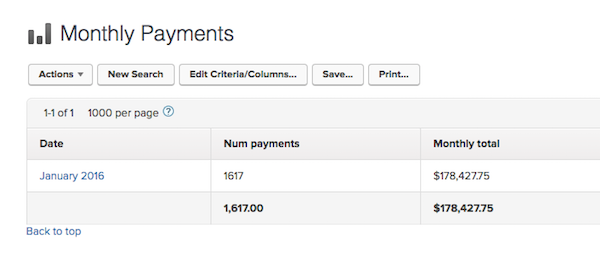
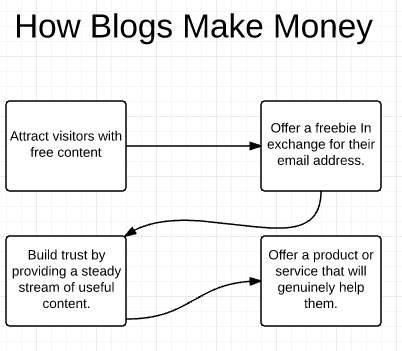
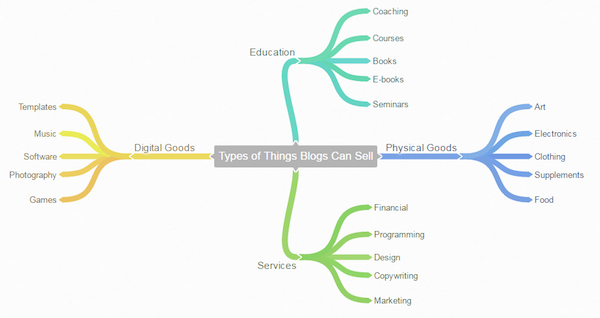
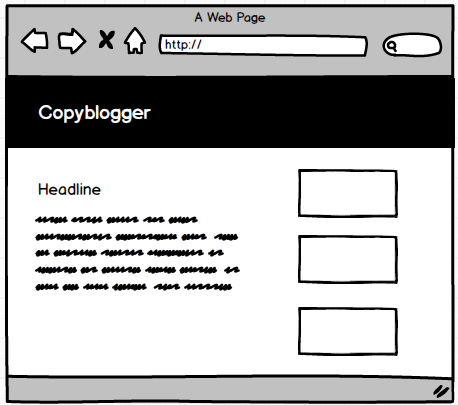
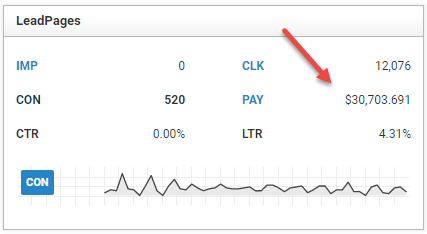

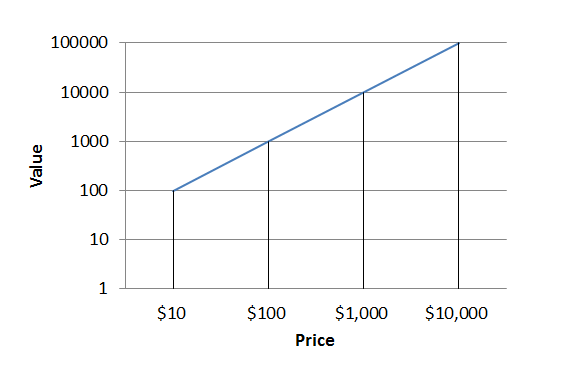

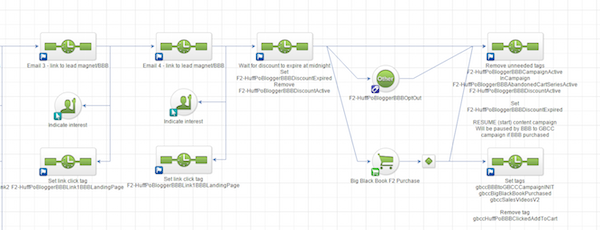

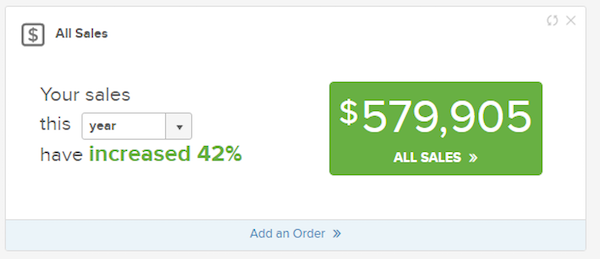
No comments:
Post a Comment